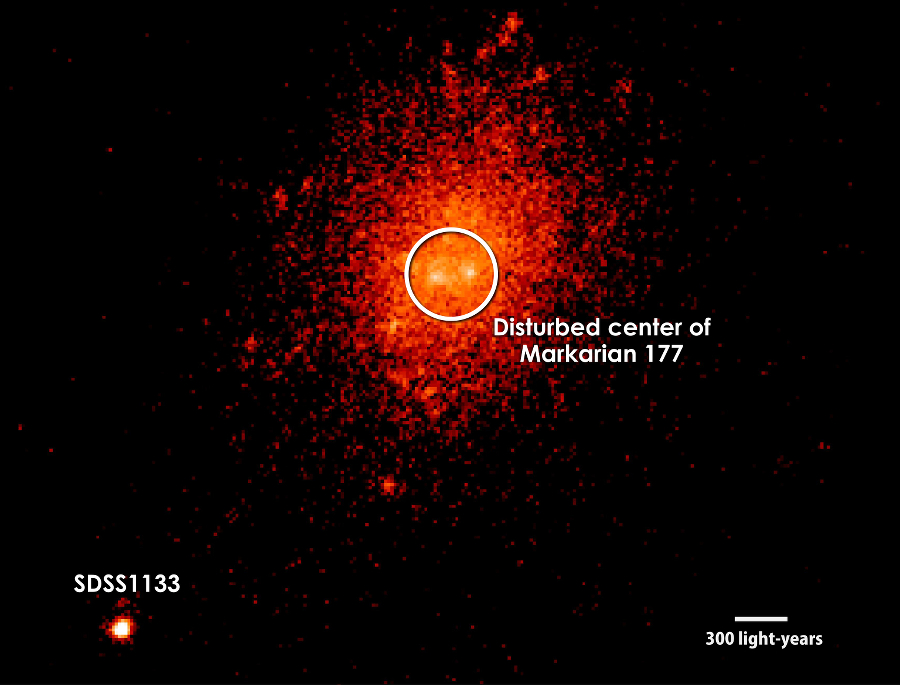
 Credit: W. M. Keck Observatory/M. Koss (ETH Zurich) et al.
Credit: W. M. Keck Observatory/M. Koss (ETH Zurich) et al.
Kicked Out?
The Cosmic Superhighway can be a crowded place. Galaxies, as they fly through space, can fly through each other too. When two galaxies collide, the chances of individual stars crashing into each other are slim. But the stars, gas and dark matter do interact gravitationally, contorting the visible shapes of the interacting galaxies and their invisible dark matter haloes. And, if the galaxies contain supermassive black holes at their centers, these supermassive black holes can also interact gravitationally, one scattering off another. Depending on the details of the interaction, the two black holes can capture each other, forming a gravitationally bound pair of supermassive black holes in orbit around each other. These binary supermassive black holes may eventually merge into each other, generating enormous gravitational radiation. In some cases this gravitational radiation can be powerful enough to (incredibly) eject the merged black hole from the interacting galaxies out into intergalactic space. Astronomers may have found an example of such a process associated with the galaxy Markarian 177. Markarian 177 is a galaxy that seems to show characteristics of a galactic collision, in particular a distorted shape and active star formation in the nucleus of the galaxy, and other features indicating a recent interaction. Near Mrk 177 is a strange object known as SDSS1133, as shown in the Keck Telescope image above. Astronomers, using images from the Digitized Sky Survey, the Sloan Digital Sky Survey, the Galex and the Swift satellite observatories, have shown that SDSS1133 has persisted as a bright source for more than 60 years, suggesting it's not a more ordinary object like a supernova remnant. There is still the possibility that this source is a weird type of supermassive, unstable star like eta Carinae, but if so, it would need to be unusually active. The preponderance of the evidence so far suggests that this is a lonely supermassive black hole flying through space. If so, how many other such monsters are out there, unseen?
Published: December 8, 2014
<
HEA Dictionary ● Archive
● Search HEAPOW
● Other Languages
● HEAPOW on Facebook
● Download all Images
● Education ● HEAD
>

Each week the HEASARC
brings you new, exciting and beautiful images from X-ray and Gamma ray
astronomy. Check back each week and be sure to check out the HEAPOW archive!
Page Author: Dr. Michael F. Corcoran
Last modified Monday, 26-Feb-2024 17:23:43 EST


